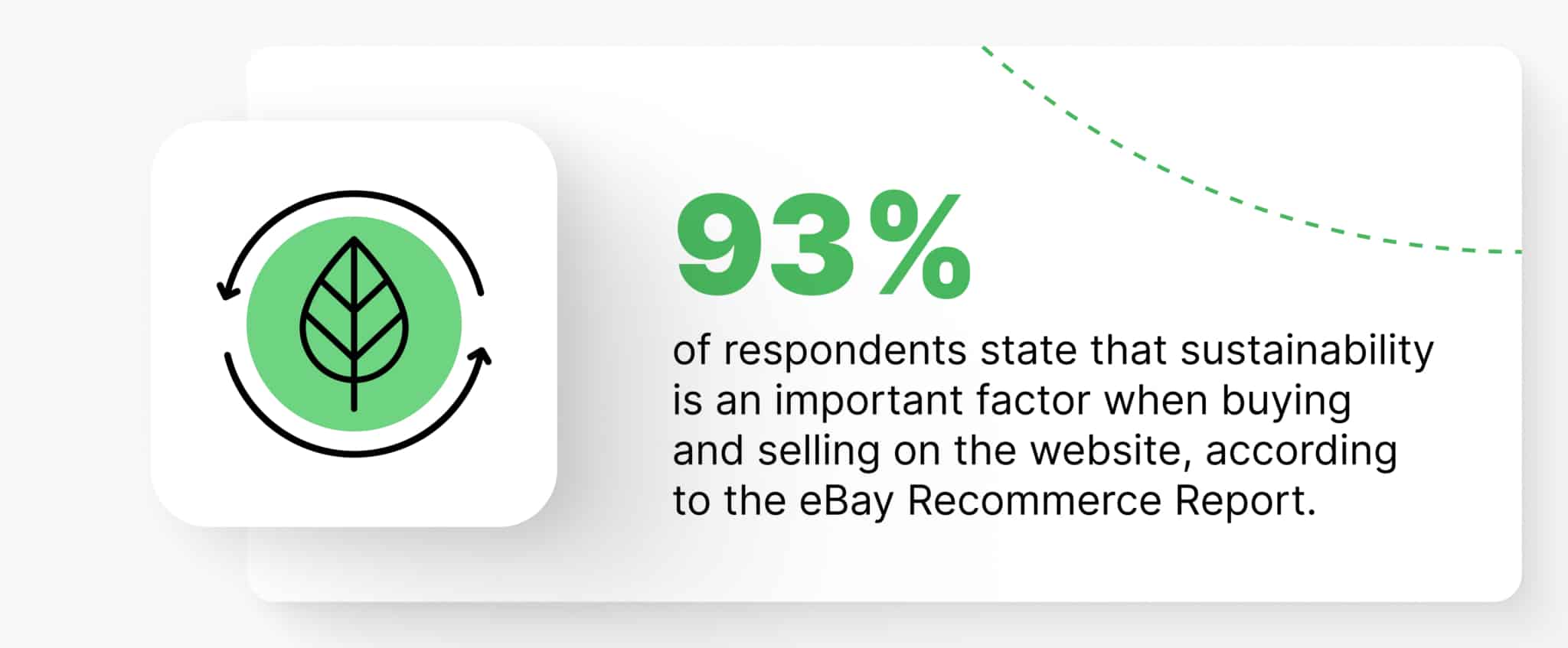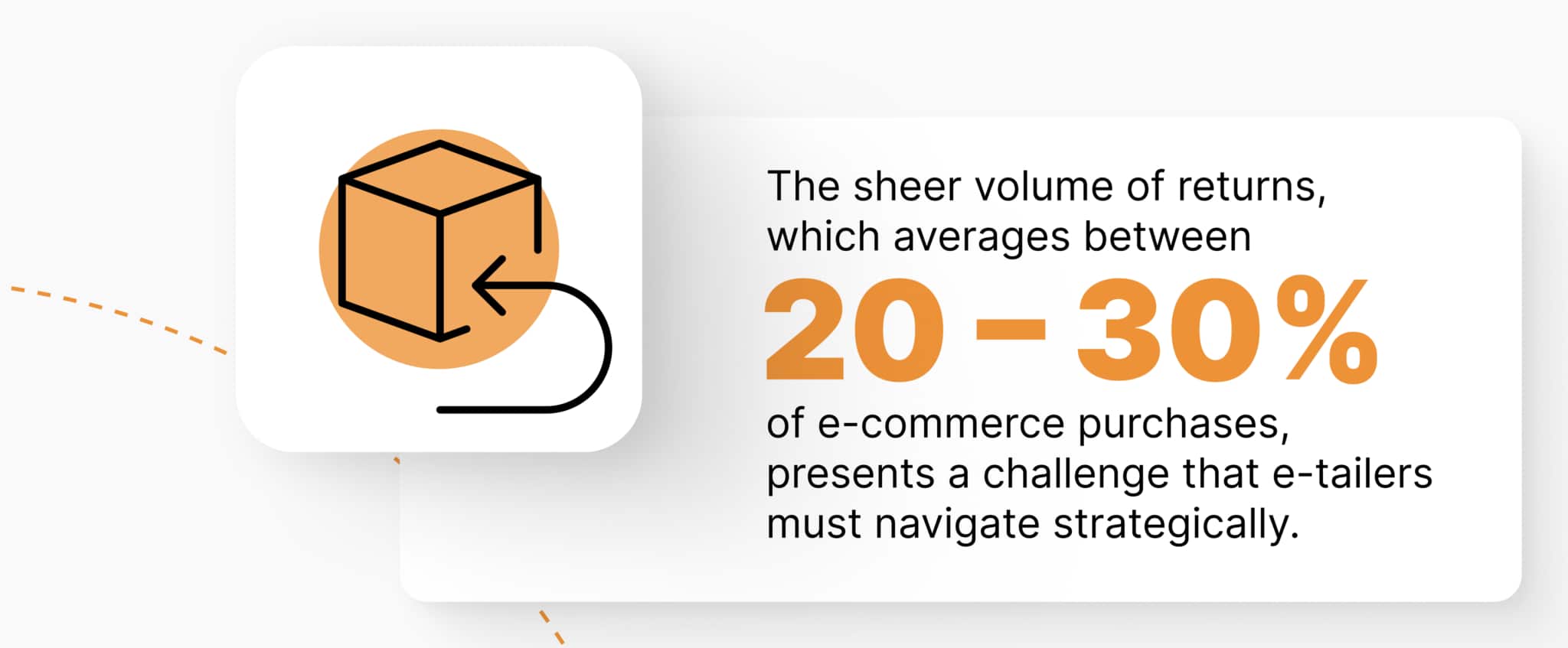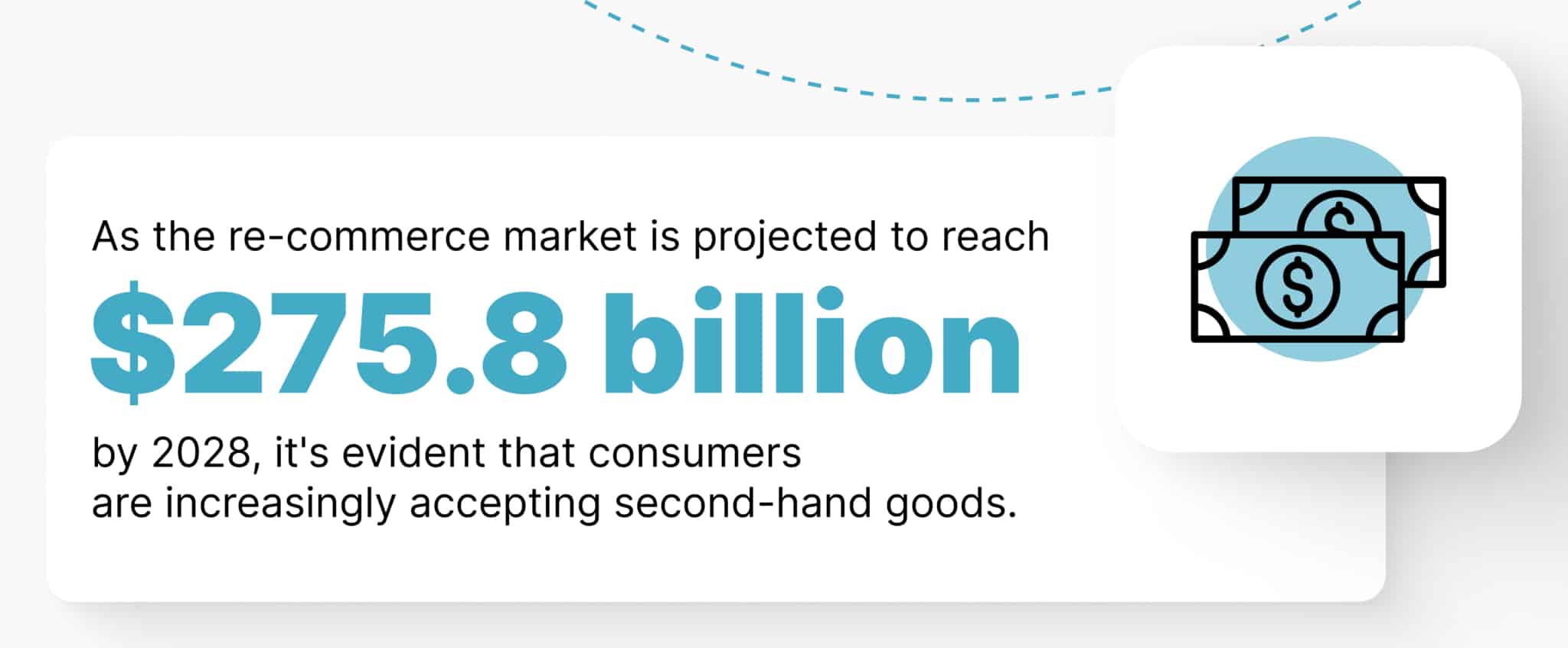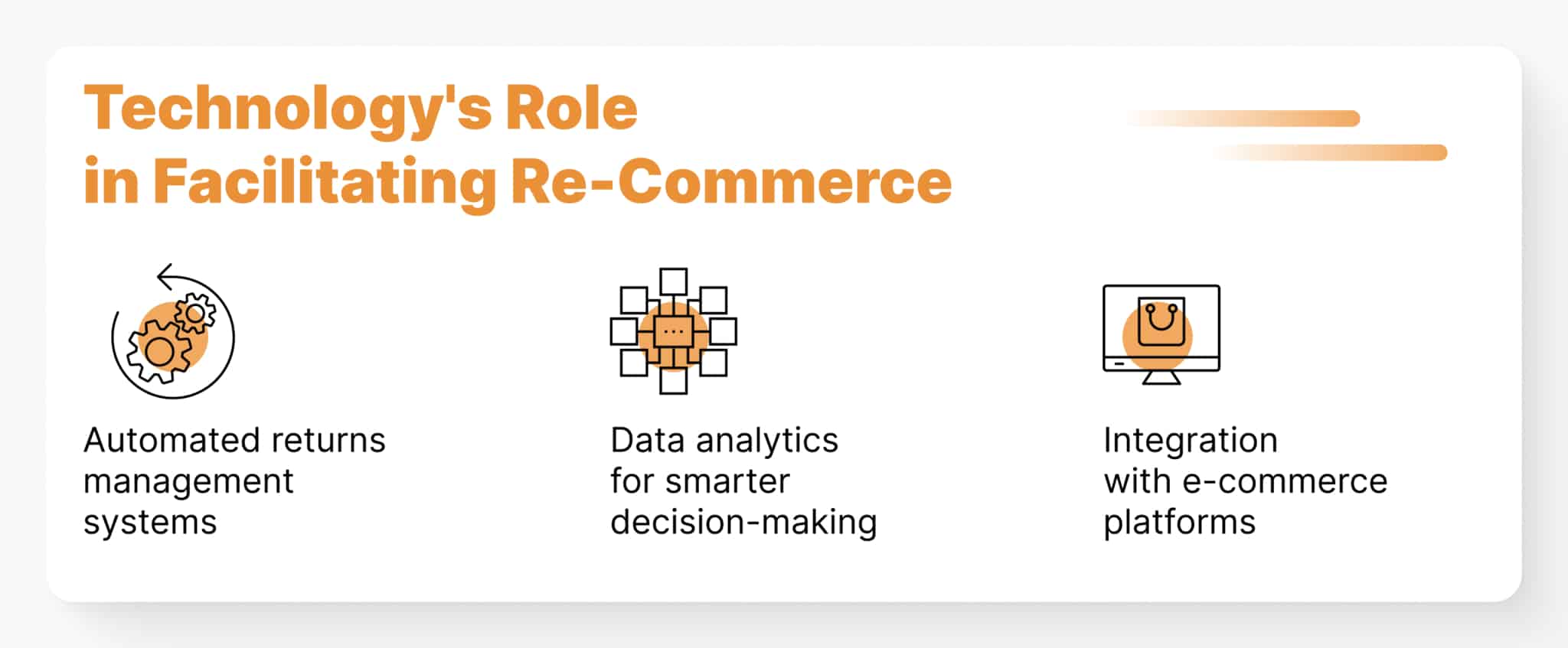In the ever-evolving commerce landscape, one trend stands out like a beacon of opportunity, beckoning businesses to sail toward uncharted shores. Re-commerce, the art of giving products a second life, has been steadily gaining traction in recent years. Also known as reverse commerce, it involves the reselling of previously owned, new, or used products.
Imagine a world where unsold or lightly touched items find their way back into the market, offering businesses a chance to profit while reducing waste. This isn’t a fantasy but a burgeoning reality, and the wave of re-commerce is rising higher than ever before.
Embracing the Sustainability of Re-Commerce

Two compelling trends are converging within commerce, creating a unique opportunity for e-commerce sellers. The first trend revolves around the growing popularity of re-commerce, a movement driven by consumers’ sustainability concerns and their desire for eco-friendly alternatives. The eBay Recommerce Report shows that 93% of respondents state that sustainability is an important factor when buying and selling on the website.
At its core, re-commerce breathes new life into products, extends their lifespan, and reduces the environmental impact of consumption. It’s a reflection of the changing consumer mindset, aligning perfectly with the increasing demand for sustainable shopping options.

The second trend is the continual growth of the e-commerce industry, with projections indicating a 9.83% growth by 2028. This exponential rise in online sales carries with it an inevitable consequence – a surge in e-commerce return rates. The sheer volume of returns, which averages between 20-30% of e-commerce purchases, presents a challenge that e-tailers must navigate strategically.
However, within this challenge lies an opportunity waiting to be harnessed. E-commerce sellers have the potential to repurpose product returns into new sales, thus increasing revenue and mitigating the impact of e-commerce returns on their bottom line. As the re-commerce market is projected to reach $275.8 billion by 2028, it’s evident that consumers are increasingly accepting second-hand goods.
In a world where every return represents a potential touchpoint for additional revenue, savvy e-commerce retailers and sellers are beginning to view these returned items not as lost sales but as untapped resources.

Harnessing E-Commerce Returns: A New Revenue Stream
In the current e-commerce landscape, returns are more than just a logistical challenge; they represent a significant opportunity for retailers to recapture value and engage with consumers in a new way. By implementing a strategic approach to managing e-commerce returns, businesses can minimize losses and even generate profit from items that would otherwise be considered a loss. This involves:
1. Streamlining the returns process
Creating an efficient and user-friendly returns process can enhance customer satisfaction and loyalty. This includes a clear return policy, simple customer procedure, and quick turnaround times while processing returns.
2. Quality control and refurbishment
Inspecting returned items for quality and functionality allows businesses to determine the best action. Products in good condition can be refurbished if necessary and resold, contributing to the company’s inventory without additional production costs.
3. Re-integration into inventory
Items that pass quality checks can be reintegrated and sold as open-box or refurbished items at a discounted rate. This not only recovers revenue but also appeals to price-sensitive customers.
4. Leveraging secondary markets
For items that cannot be sold directly through the primary sales channels, businesses can explore secondary markets or online platforms that sell pre-owned, refurbished, or open-box items. This expands the potential customer base and maximizes value recovery from returned products.
Technology’s Role in Facilitating Re-Commerce

The rise of re-commerce is intricately linked to advancements in technology, particularly in the realm of reverse logistics. Platforms like ReverseLogix are at the forefront of this revolution, offering comprehensive solutions that streamline the entire returns management process. These technologies offer:
1. Automated Returns Management Systems
These systems simplify the returns process, from initiation to final disposition of the returned item. They ensure efficiency, reduce manual errors, and improve customer satisfaction by expediting refunds or exchanges.
2. Returns Data Analytics for Smarter Decision-Making
By analyzing data from returns, businesses can gain insights into customer behavior, product performance, and potential quality issues. This information is invaluable for making informed decisions about inventory management, product improvements, and targeted marketing strategies.
3. Integration with E-commerce Platforms
Seamless integration with existing e-commerce platforms ensures a smooth workflow and enables businesses to manage returns more effectively. It also facilitates the resale of returned items, making it easier for companies to reintegrate products back into their inventory.
Seizing the Re-Commerce Opportunity
The e-commerce revolution offers a promising avenue for businesses to enhance their profitability, align with sustainable practices, and meet consumers’ evolving demands. By harnessing the power of returns and leveraging technology to streamline the re-commerce process, retailers and e-commerce sellers can unlock hidden treasures within their returns.
Platforms like ReverseLogix play a pivotal role in this transformation, enabling businesses to turn challenges into opportunities. As we move forward, embracing re-commerce isn’t just a strategic business decision; it’s a step towards a more sustainable and customer-centric future.
Ready to get ahead of the re-commerce curve? Click here to get started with ReverseLogix Today!
